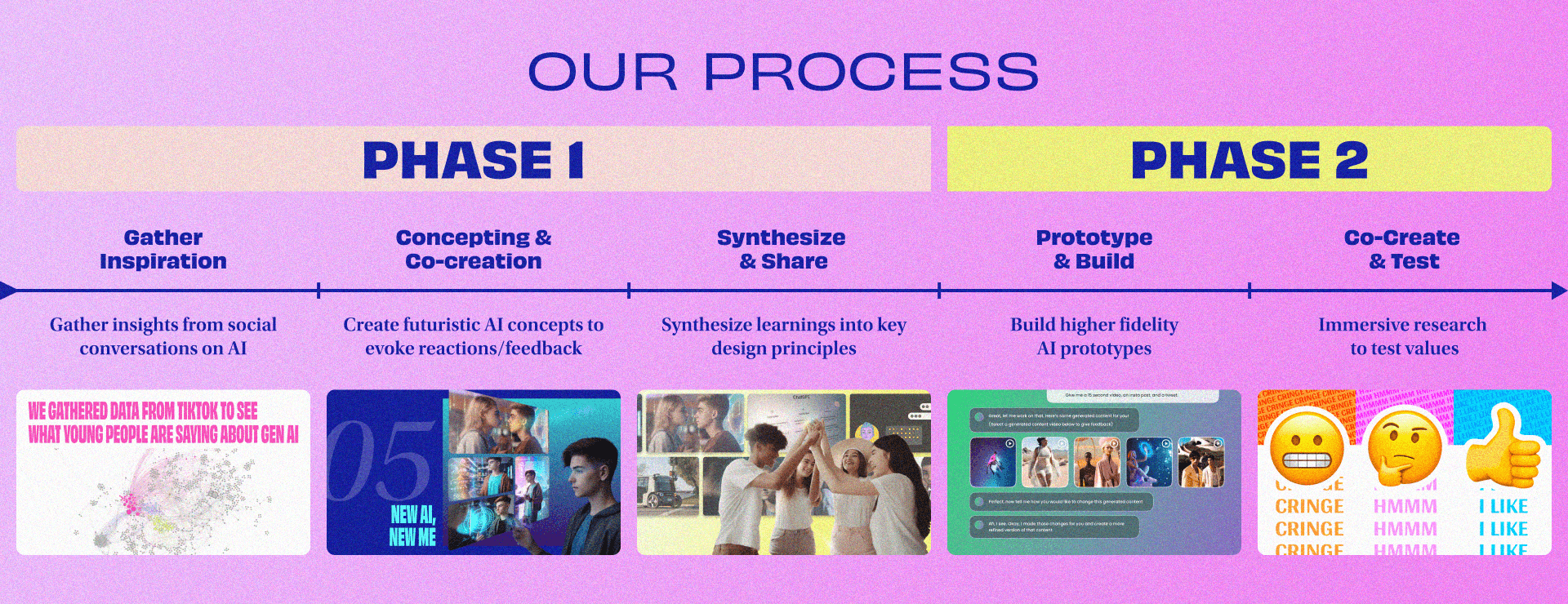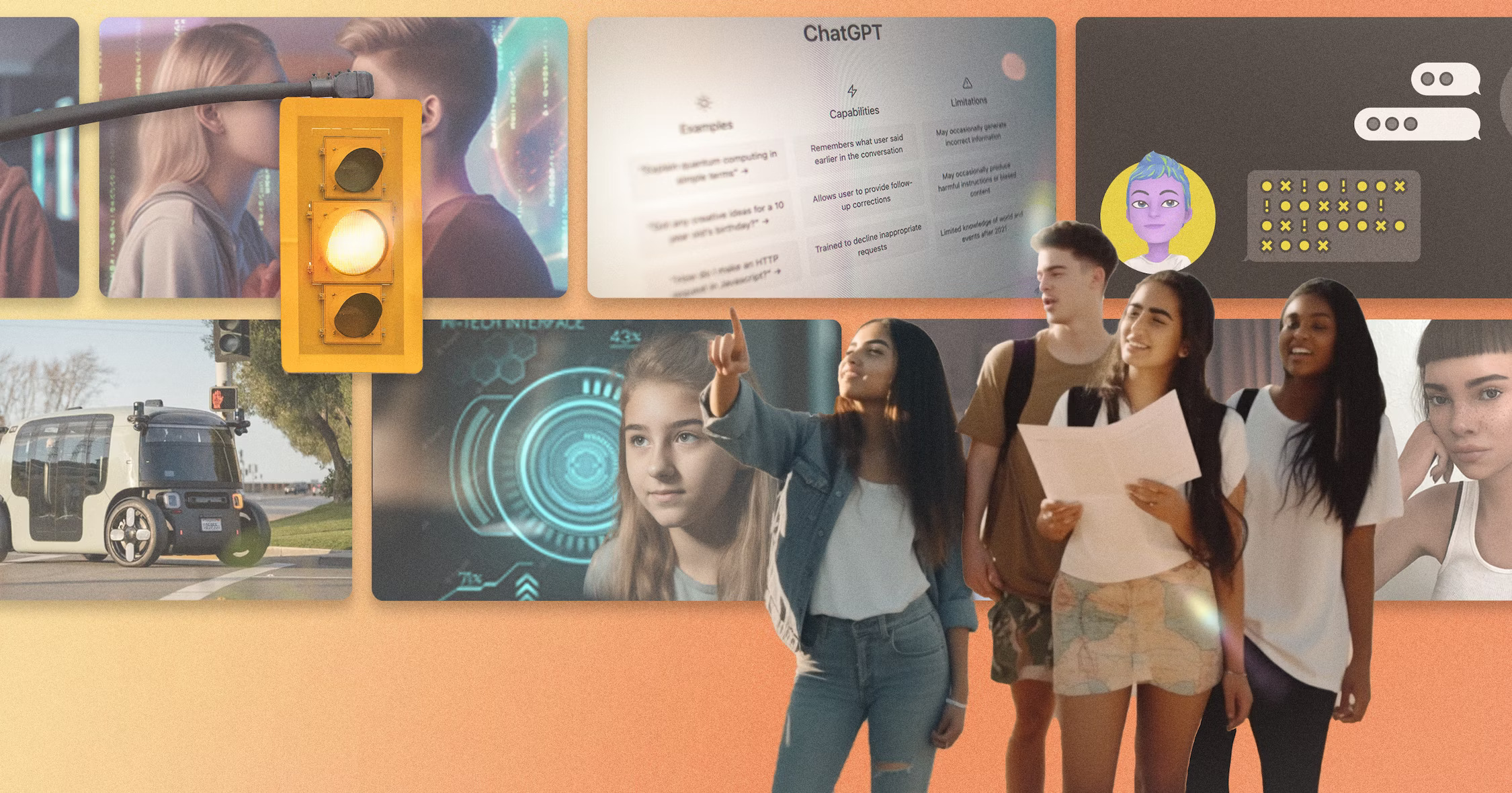Prototyping at the speed of AI

The ways Gen Z is using AI are evolving almost as fast as the technology itself.
To monitor how use cases have shifted over time, we developed a social listening tool to scrape AI hashtags on TikTok, creating a visualization of conversations and communities.
In the spring of 2023, much of the positive sentiment around AI was associated with productivity-related hashtags—activities like homework and writing. By October, AI music became its own distinct community, and hashtags for AI fanfiction, AI anime, and memes grew. Our most recent scrape in early 2024 showed us that AI is shifting from a predominantly solo activity to one centered on community. Hashtags like #aiart and #aiartcommunity are growing in size and in connections, suggesting that AI-generated art isn’t created in a silo—people are sharing their experiences.
In just a matter of months, Gen Zs have evolved their use cases to align with their priorities—sharing their passions and connecting with communities in playful and imaginative ways.
AI companies are also moving fast. The race to create the most impressive and jaw-dropping AI products is adding frenetic urgency, and companies are spending millions of dollars on development resources, then quick-launching new products with the hopes that they will be well received. Often, launch is the first time companies are able to test out their products in the real world.
We are seeing rapid technological progress, but also backlash against irresponsible designs and technologies that have real potential to clash with human values and cause harm. We believe AI has potential for revolutionary experiences and capabilities that improve the ways we live, connect, and play. But we also believe this future requires a foundation of trust and responsible design.
To that end, we are experimenting with a different way of developing AI products—one that doesn’t compromise speed but also aligns with human values. By designing experiential prototypes that mimic real-world scenarios, we can create tight feedback loops that get us better user feedback, sooner. These prototypes are run in contained settings where we can look for unintended consequences. (Picture two people with paper scripts, role-playing what it feels like to interact with AI in a particular scenario.) We don't need to build the technology needed for the experience to work—our first step is to test for emotional value. That way, we focus our development resources on building the most impactful and responsible products and experiences possible.

In an earlier phase of our research, we used the results of our social listening experiments to work directly with members of Gen Z between the age of 13-24, talking through potential product concepts and gathering their reactions. This time, we’re going deeper, prototyping products that have AI taking on different personalities and roles with a group of Gen Zs who are coming of age, gaining life skills, and forming their sense of identity as AI is also taking shape in our society. With their help, we’re learning how to build future AI experiences that center their values and needs.
Growing up with social media, members of this generation have already felt the potential impact irresponsible technologies can have on their mental health and relationships, and they have a critical eye for both opportunity and responsibility. While they are strong proponents of the products and brands that they believe in, they're also not shy about making their voices heard when products clash with their values systems.
In this series, we will put eight AI prototypes to the test. By leaning into immersive research tools like experiential testing and imaginative playtesting, we are focusing our learning objective on measuring how these young people feel when they are using AI products, and how the products would impact their perception of themselves and their relationships. For us, understanding the value of the product in the context of the user’s life, their value systems, and relationships is a crucial step that helps us identify the features and technical capabilities that are worth investing in. Join us as we dive into new prototyping methods for designing and testing the edges of what future users really want from AI.
Parts of the images in this article were created/altered using generative AI.
Words and art





Subscribe

.svg)








.webp)
